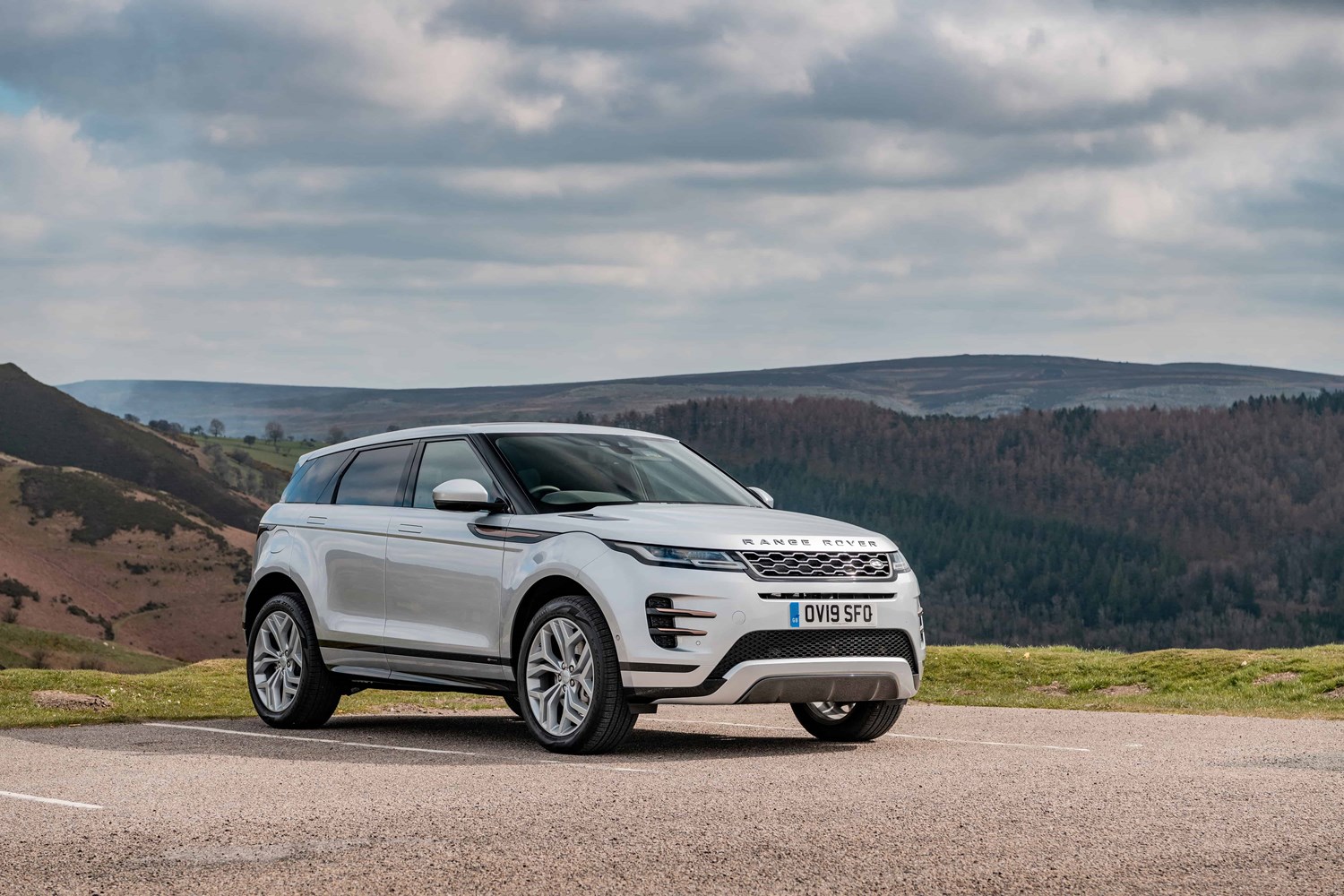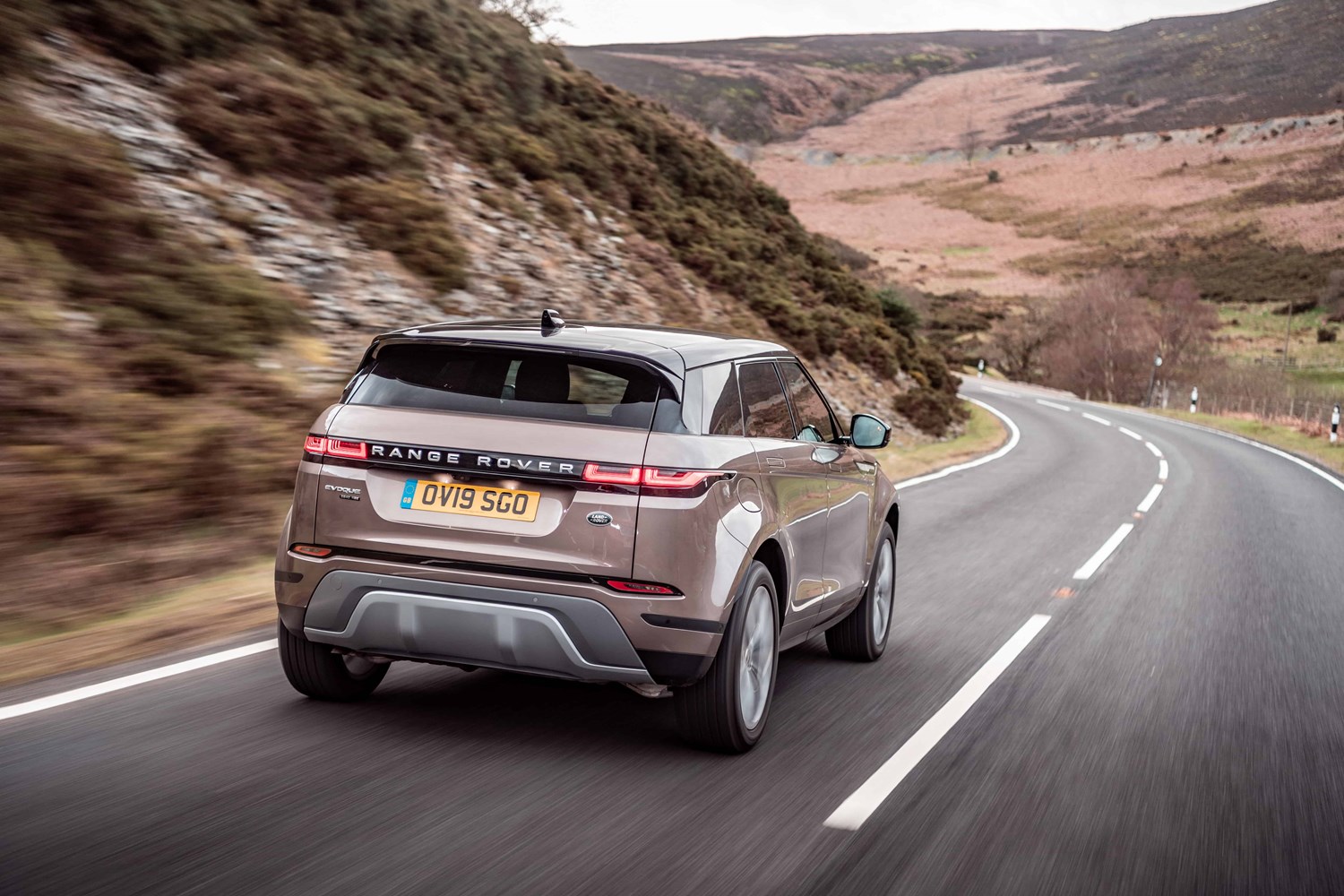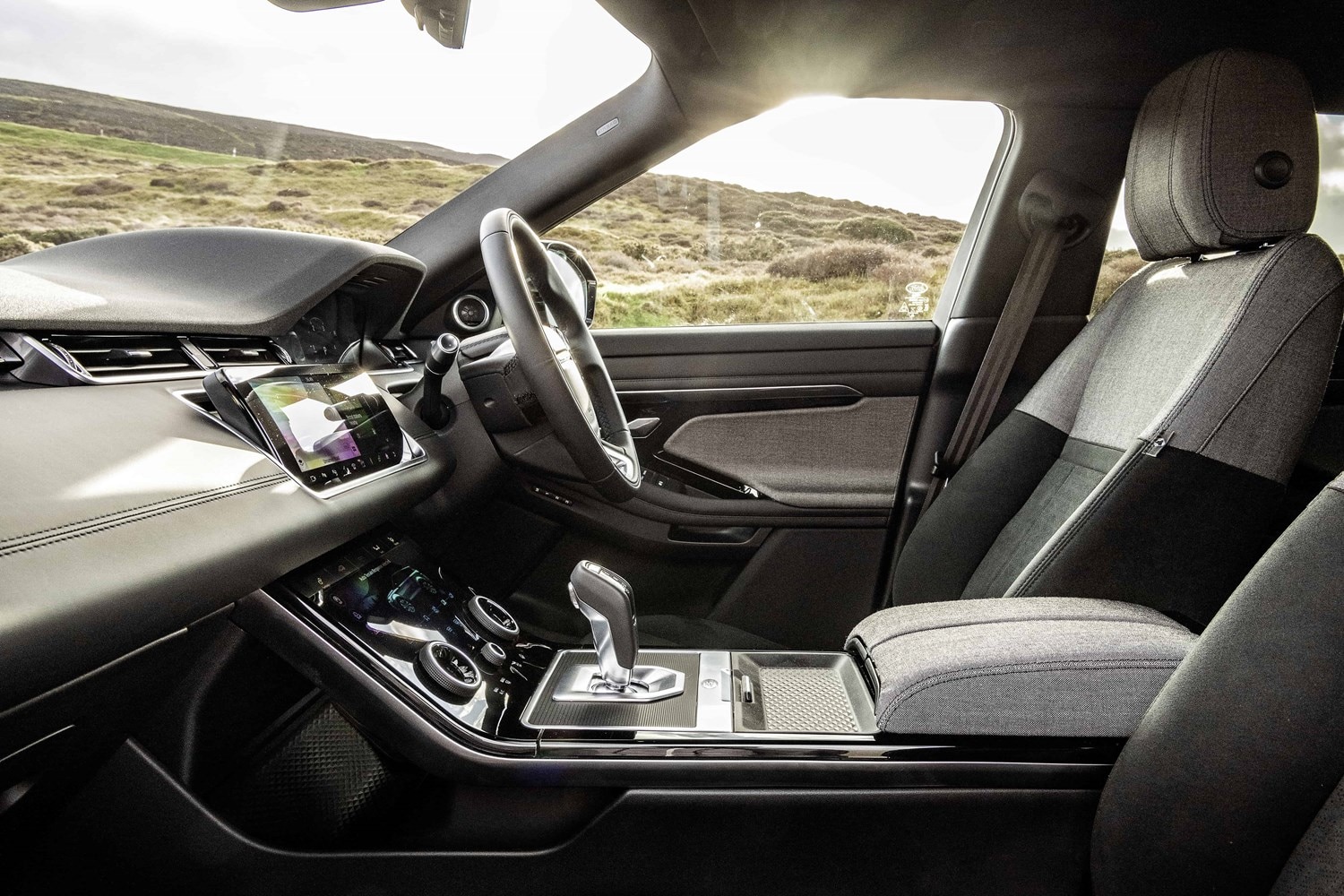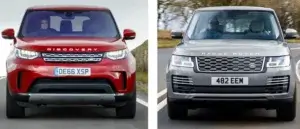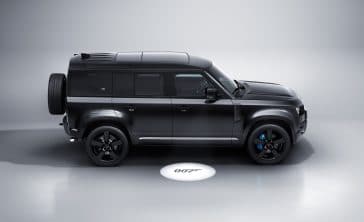Space and practicality
Inside, the latest Evoque has been given a look that’s more in keeping with other models in the Range Rover line-up – in particular the Velar. That means occupants are cocooned in high-quality materials and the design is clean and modern. It will take a little getting used to some of the functions and controls, but there’s plenty of opportunity for personalisation so you can tailor it to just how you’d like.
Up front, there’s a wide range of seat and steering adjustment, so that means anyone can find the perfect driving position, and while it may be the smallest model in the Land Rover line up, it still commands a high and imposing driving position.
What’s great news is that the latest iteration of the Evoque has a longer wheelbase, which means more space in the back for passengers and a bigger boot, though itt remains pretty cosy in the back, and while leg room is an improvement, it may be a bit uncomfortable for three people to sit in the rear on any extended journey.
The sloping roofline also equates to quite poor visibility out of the rear, though an optional digital rear-view mirror camera system can help to give you a better view out of the back.
As we mentioned the boot is bigger than the outgoing model – ten percent larger in fact – and that means with the seats up there’s 591 litres of room, which expands to 1,383 when you fold them down – in a 40:20:40 split.
Engines
Distinguishing between petrol and diesel is made easier with the prefix on the badge at the back of the car. ‘P’ stands for petrol and ‘D’ refers to diesel, and the number links to the power output. Nice and simple.
For many the entry level 148bhp 2.0-litre D150 will be all the car you’ll need, especially for those who won’t be going off the beaten track and just using it for daily runs. It’s powered through the front wheels, whereas the others get four-wheel drive. It’s not as quick as some of the rivals, but it has enough to keep with traffic on the motorway and copes with city driving well too.
The D180 is better suited to anyone wanting a bit more grunt and the added bonus of four-wheel drive, while the D240 is excellent but just a bit on the expensive side, especially when you consider just how good the D180 is.
Petrol wise, there’s three 2.0-litre choices – the P200, P250 and P300. All of them are relatively swift, but rather thirsty on fuel. While the performance figures are better than the diesels, the Evoque isn’t a car designed to be driven quickly.
The petrol-electric P300e plug-in hybrid is new for 2020 and is looking to compete with rivals from Volvo and BMW in this segment. It will return a claimed 41 miles on a full charge, and takes around half an hour to charge to 80 per cent using a 32kW public charging point – or about an hour and a half using a normal home charger. You’ll have to leave it charging overnight if you use a normal three pin plug socket.
Running costs
Regardless of its ‘compact’ size for a Range Rover, it’s still a capable SUV, which means running costs aren’t going to be as competitive as some rivals that are more car-like to drive.
There’s no question that if you’re looking for good economy, then it’s worth looking at the plug-in hybrid model. It’s better suited for anyone doing short journeys on a daily basis thanks to its electric range, which allows for a claimed fuel economy figure of 201.8mpg, and CO2 emissions of 32g/km.
Aside from the plug-in hybrid model, the 2.0-litre D150 front wheel drive diesel will be the most frugal version – offering around 40mpg.
You’ll be hit slightly harder at the pumps if you opt for the petrol version with even the most economical P200 averaging under 30mpg in real world conditions.
